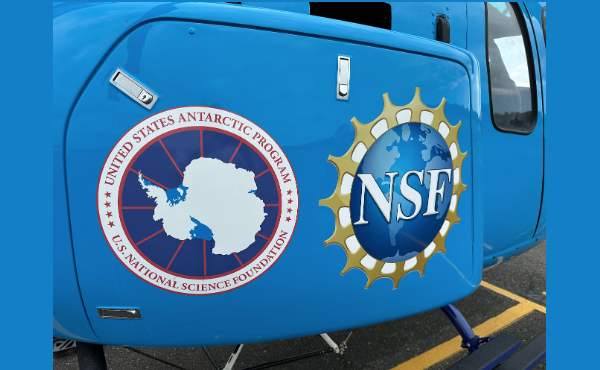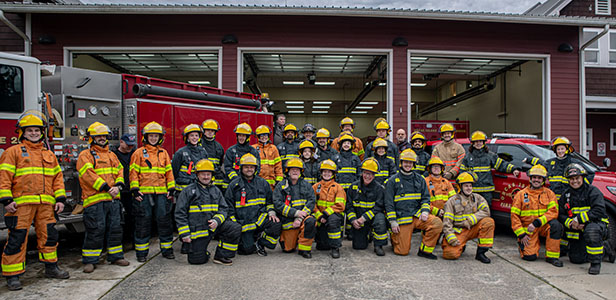||| FROM CHIP LONG for ORCAS AIRPORT |||
In the interest of full transparency, I want to answer the question: What was all that helicopter activity and noise on Monday morning? Shortly after 10:00 am, what appeared to be a Homeland Security aircraft showed up in our airport traffic pattern– not unusual as they occasionally do a single approach for training en route to their destination. But this was different.
Several approaches were made, in fairly quick order, generating half a dozen phone calls from curious and concerned Eastsound neighbors. I reached the crew on our Common Traffic Advisory Frequency (a radio frequency dedicated to flying around the San Juan Islands in uncontrolled airspace), briefly shared our noise abatement procedures, and asked for a call once they returned to base.
As further follow up, I flew to Bellingham on Thursday to visit with CBP (US Customs and Border Protection, who oversee Homeland Security flights originating at BLI) to close the loop on our local procedures. Interestingly enough, as I taxied to park the very same helicopter with crew was on the ramp, a perfect opportunity to speak to them directly!
Here’s where there’s more to the story…
On Monday the crew found themselves at ORS having initially gone to Bayview/Skagit field with important training planned. But there, they encountered unexpected fog and low visibility conditions, so they changed plans and came to Orcas for better weather. Their decision was entirely appropriate, what was unfortunate was their unfamiliarity with our local procedures.
And surprisingly they weren’t Homeland Security, they were aviation support for the National Science Foundation managing the United States Antarctic Program (USAP). The U.S. Antarctic Program deploys roughly 3,000 people to Antarctica annually, mostly during the austral summer from October through February. These participants include scientists who conduct research; support staff who operate and maintain the U.S. research stations and vessel; members of the military and other federal agencies; artists, writers, and educators who partner with researchers to broaden public awareness of Antarctica and Antarctic science; and members of the media who report on Antarctic science. In this case, three helicopters, crew, and support staff had originated in Anchorage, stopped in Bellingham for a week of training, and were continuing to McChord AFB where they’d be loaded on a C-17 cargo aircraft for their final destination, McMurdo Station, Antarctica.
With only a week to get a compressed schedule of training in, each flight had to count. I did get time with Jesse, the program manager, and he and the entire team couldn’t have been more respectful and apologetic. They were also very proud of the work they were doing and support they were providing. Does the interesting nature of their mission give them a pass on knowing our local procedures? It does not. But it’s a reminder we can always do better.
For those of you who called Monday, thanks for your awareness and concern, reaching out was exactly the right thing to do. My experience at airports large and small is that informing and educating is a continuous process, one best done in partnership with the community, the Port, and our visiting aviators.
**If you are reading theOrcasonian for free, thank your fellow islanders. If you would like to support theOrcasonian CLICK HERE to set your modestly-priced, voluntary subscription. Otherwise, no worries; we’re happy to share with you.**









Thanks for the very informative update!
And thanks for your outreach efforts to those agencies!
Great job, Chip! Your detailed and transparent explanation of the helicopter activity on Monday was much appreciated. It’s clear you took a thoughtful and proactive approach in addressing the concerns of our community while also educating us about the situation. Your commitment to clear communication and collaboration with both local residents and visiting aviators is exemplary. Thank you for keeping us informed and for your dedication to maintaining a positive relationship between Orcas Airport and the Eastsound community.
— Jason Bradshaw, General Manager, Eastsound Sewer and Water District
Who knew U.S. Antarctic Program had helicopters !!!
Thanks Chip.
Very interesting. I think that’s the same Monday morning at 10 that many of us were playing on the pickle ball courts and were hearing and looking up at what was going on. Thanks for the information.
Would that every manager were so clear and thorough. Truly a great explanation and an entertaining story.
Thanks for the update.
Just more loud noise from the Eastsound airport zone which unfortunately includes all of our town!
Thanks for this – makes me wonder what kind of helicopter they need for Antartica!
Chip, Thanks for the clarity – and for the link. Now I have a Sunday afternoon rabbit hole to go down reading about all of the cool research happening with the USAP.
I had also noticed this flight doing loops over Eastsound and wondered what was going on. Thank you for reporting on this and doing some good detective work to determine who was operating the helicopter.
I have no problem with military, government, scientific, medical, or even commercial flights operating out of ESD/KORS. It’s the constant buzzing of joyriding civilian aircraft that bothers me. Some of the newer planes are very quiet, but many of the older ones are intolerably loud. In a society that is increasingly interested in equal rights, it’s very odd that one wealthy guy in his vintage toy airplane has a legal right to make so much noise, for no purpose other than his personal enjoyment and the display of his status and property in a public setting.
One would think, and I would appreciate it if the new airport staff would lobby the FAA and come up with a ruling different from the current FAA approved approach and after take-off patterns, and travel over the water instead of over populated areas… as is also a requirement in the FAA rules.